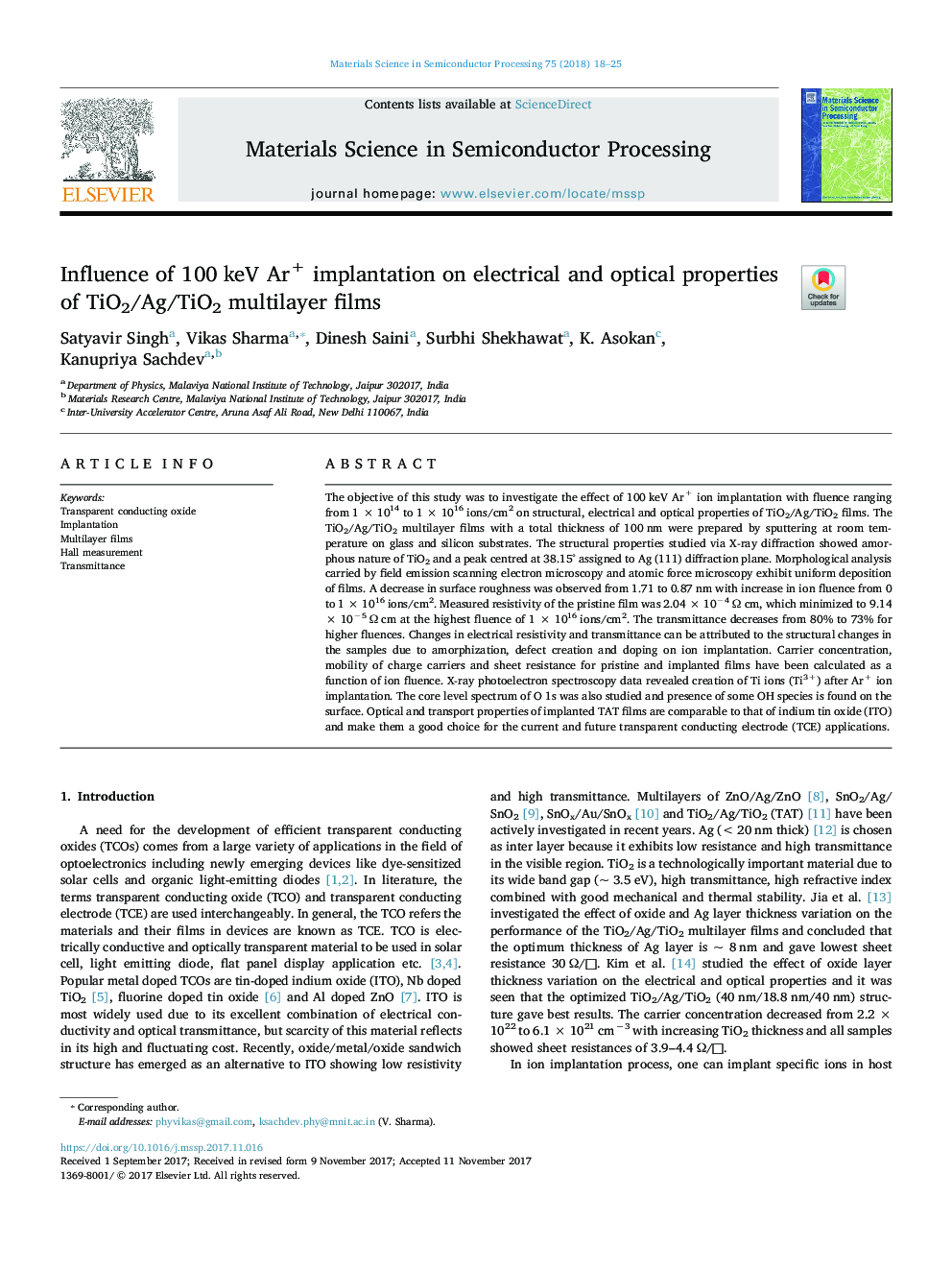| Article ID | Journal | Published Year | Pages | File Type |
|---|---|---|---|---|
| 7118010 | Materials Science in Semiconductor Processing | 2018 | 8 Pages |
Abstract
The objective of this study was to investigate the effect of 100 keV Ar+ ion implantation with fluence ranging from 1 à 1014 to 1 à 1016 ions/cm2 on structural, electrical and optical properties of TiO2/Ag/TiO2 films. The TiO2/Ag/TiO2 multilayer films with a total thickness of 100 nm were prepared by sputtering at room temperature on glass and silicon substrates. The structural properties studied via X-ray diffraction showed amorphous nature of TiO2 and a peak centred at 38.15° assigned to Ag (111) diffraction plane. Morphological analysis carried by field emission scanning electron microscopy and atomic force microscopy exhibit uniform deposition of films. A decrease in surface roughness was observed from 1.71 to 0.87 nm with increase in ion fluence from 0 to 1 à 1016 ions/cm2. Measured resistivity of the pristine film was 2.04 à 10â4 Ω cm, which minimized to 9.14 à 10â5 Ω cm at the highest fluence of 1 à 1016 ions/cm2. The transmittance decreases from 80% to 73% for higher fluences. Changes in electrical resistivity and transmittance can be attributed to the structural changes in the samples due to amorphization, defect creation and doping on ion implantation. Carrier concentration, mobility of charge carriers and sheet resistance for pristine and implanted films have been calculated as a function of ion fluence. X-ray photoelectron spectroscopy data revealed creation of Ti ions (Ti3+) after Ar+ ion implantation. The core level spectrum of O 1s was also studied and presence of some OH species is found on the surface. Optical and transport properties of implanted TAT films are comparable to that of indium tin oxide (ITO) and make them a good choice for the current and future transparent conducting electrode (TCE) applications.
Related Topics
Physical Sciences and Engineering
Engineering
Electrical and Electronic Engineering
Authors
Satyavir Singh, Vikas Sharma, Dinesh Saini, Surbhi Shekhawat, K. Asokan, Kanupriya Sachdev,
